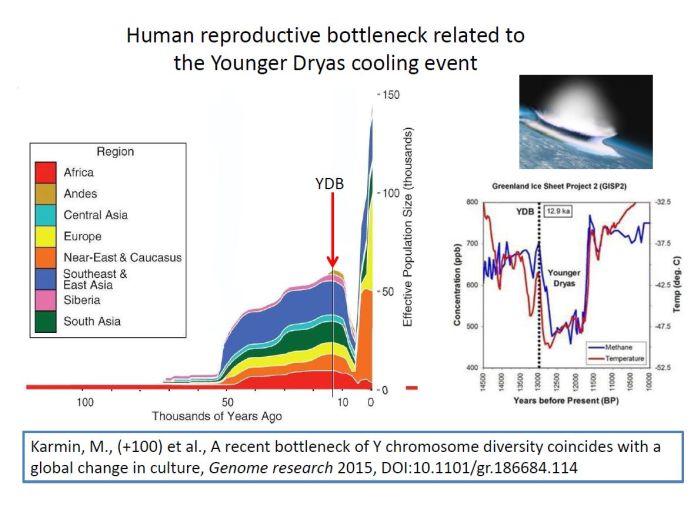 Index
Index

Karmin, et al.[1] describe a the bottleneck in the human Y chromosome starting 12,900 years ago. The paper, published in 2015 is entitled "A recent bottleneck of Y chromosome diversity coincides with a global change in culture".

The authors present a study of 456 geographically diverse high-coverage Y chromosome sequences. Applying ancient DNA calibration, they date the Y-chromosomal most recent common ancestor in Africa at 254 thousand years ago and detect a cluster of major non-African founder haplogroups in a narrow time interval at 47 to 52 thousand years ago, consistent with a rapid initial colonization model of Eurasia and Oceania after the out-of-Africa bottleneck.
In contrast to demographic reconstructions based on mtDNA, the authors infer a second strong bottleneck in Y-chromosome lineages dating to the last 10,000 years. The authors hypothesize that this bottleneck is caused by cultural changes affecting variance of reproductive success among males.

Samples were obtained from East and West Africa, from the Near East, from Europe, Siberia, South Asia, South Central Asia, East and Southeast Asia, Oceania, and the Andes. It was truly an international effort.
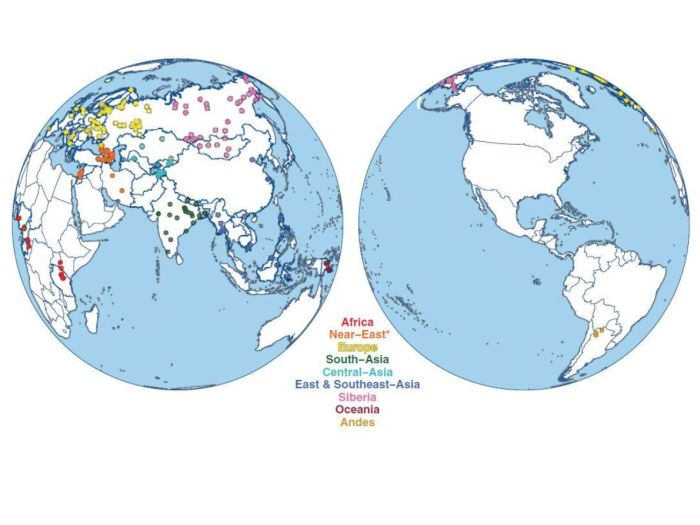
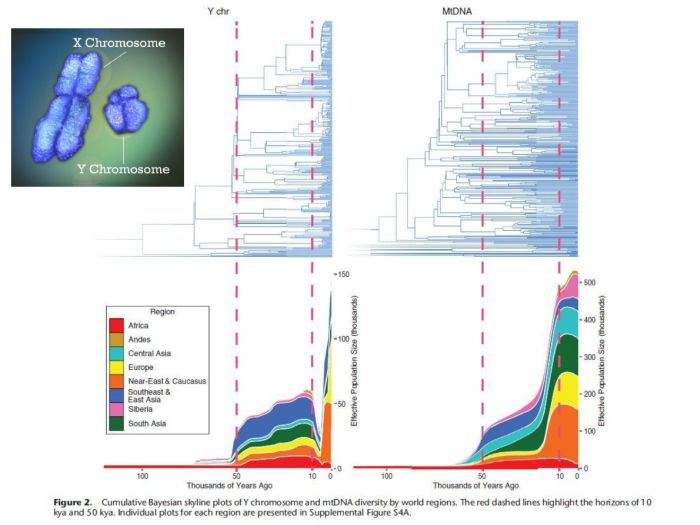
This figure shows a bottleneck in the Y chromosome, on the left, but not in the mitochondrial DNA, on the right. The authors write that "The surprisingly low estimates of the male effective population size might be explained either by natural selection affecting the Y chromosome or by culturally driven sex-specific changes in variance in offspring number. As the drop of male to female effective population size does not seem to be limited to a single or a few, selection is not a likely explanation. However, the drop of the male effective population size during the mid-Holocene corresponds to a change in the archaeological record characterized by the spread of Neolithic cultures, demographic changes, as well as shifts in social behavior."
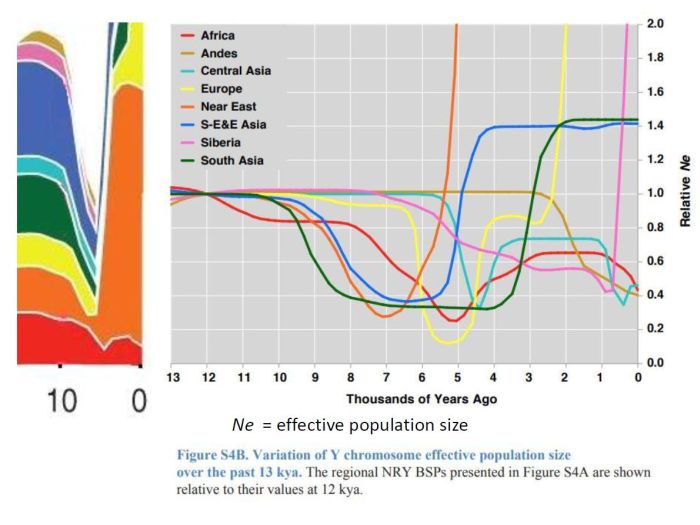
The Y-chromosome data has enough temporal resolution to show that the Near-East and Caucasus region, in orange, recovers starting about 7,000 years ago, which is at least one thousand years before other regions. This is followed by recovery in southeast and east Asia in blue, and then by South Asia, in green. Europe, in yellow, reaches the lowest effective population size at around 5,000 years ago. The effective population of Europe then has one thousand years of genetic stagnation before diversity increases again 2,500 years ago. Siberia loses genetic diversity until 1000 years ago when it experiences a rapid rise in effective population size. The authors state that the changes in effective population might have been caused by various factors, such as competition through male-driven conquest, and innovations in transportation technology like the invention of the wheel, domestication of horses and camels, and open water sailing.

It is difficult to believe that a global change in human culture was responsible for the Y-chromosome bottleneck. The graph shows that population sizes for all regions of the world reached a maximum approximately at the Younger Dryas Boundary 12,900 years ago, as indicated by the red arrow. A simultaneous global change in culture would mean that people in Europe, Southeast Asia, East Asia, the Near-East, Central Asia, and all other regions of the world coordinated their culture and sexual practices in lands separated by oceans, jungles, deserts and mountains. This level of coordination would be extremely difficult even today with modern transportation and electronic media.
The decrease in effective population size for all regions in the Y-chromosome graph starts gradually at the onset of the Younger Dryas 12,900 years ago, then it dips suddenly and it continues to decrease well beyond the 1300-year duration of the cold event. The increase of the effective population size is just as abrupt as the end of the Younger Dryas. The Near-East and Caucasus region, in orange, recovers starting about 7,000 years ago, and it is not surprising that this area is in Mesopotamia, which became the cradle of our civilization after the Younger Dryas cataclysm.
Some researchers in Finland have found a temperature-related birth sex ratio bias in historical Sami people. Warm years bring more sons. The effect is quantifiable so that an increase of one degree Celsius during two years corresponds to approximately 1 percent more sons born annually. So, if warm years bring more sons, a long period of cold years may decrease the relative male population.
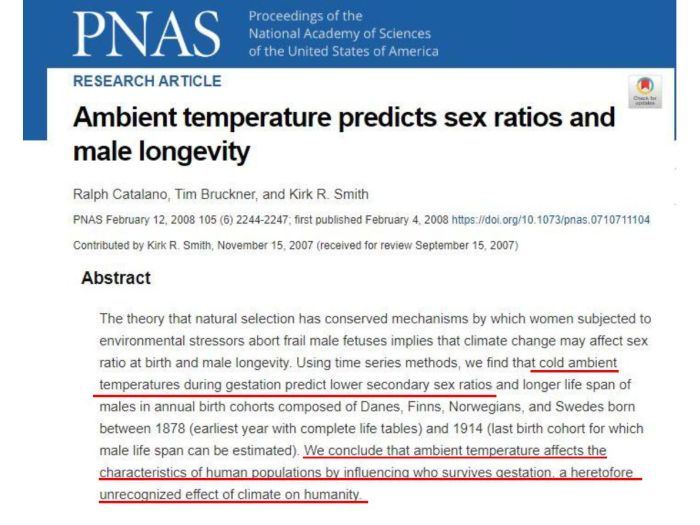
This is confirmed in a paper by Catalano, Bruckner and Smith that found cold ambient temperatures during gestation predict lower secondary sex ratios. They conclude that ambient temperature affects the characteristics of human populations by influencing who survives gestation, a heretofore unrecognized effect of climate on humanity.
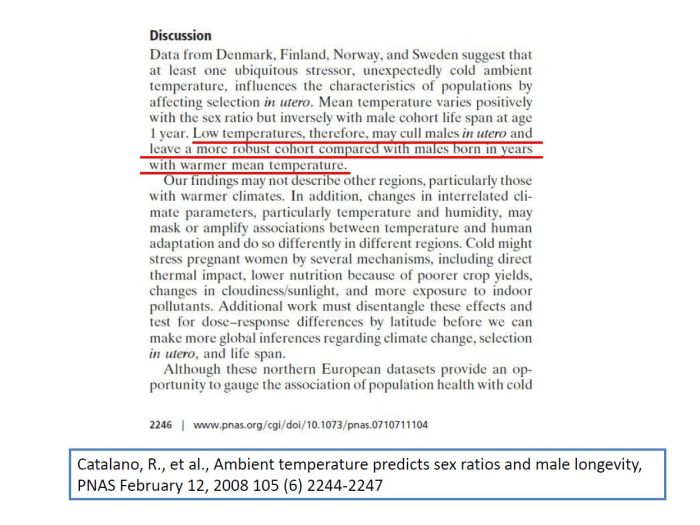
The paper by Catalano goes on to say that low temperatures may cull males in utero and leave a more robust cohort compared with males born in years with warmer mean temperature. This means that a prolonged period of cold weather, like the Younger Dryas, could have had a devastating effect on the survivability of human males.
The paper by Karmin and 100 coauthors offers a wealth of information about the Y-chromosome bottleneck. The authors attributed the decrease in Y-chromosome diversity to a global change in culture, but the research about the effect of ambient temperature on the human male-to-female ratio makes possible a different interpretation, which is that the Y-chromosome bottleneck was caused by the onset of the Younger Dryas cooling event. According to the Younger Dryas Impact Hypothesis, a comet impact in North America triggered the Younger Dryas cooling event and the extinction of the North American Megafauna. Humans had a close call.
